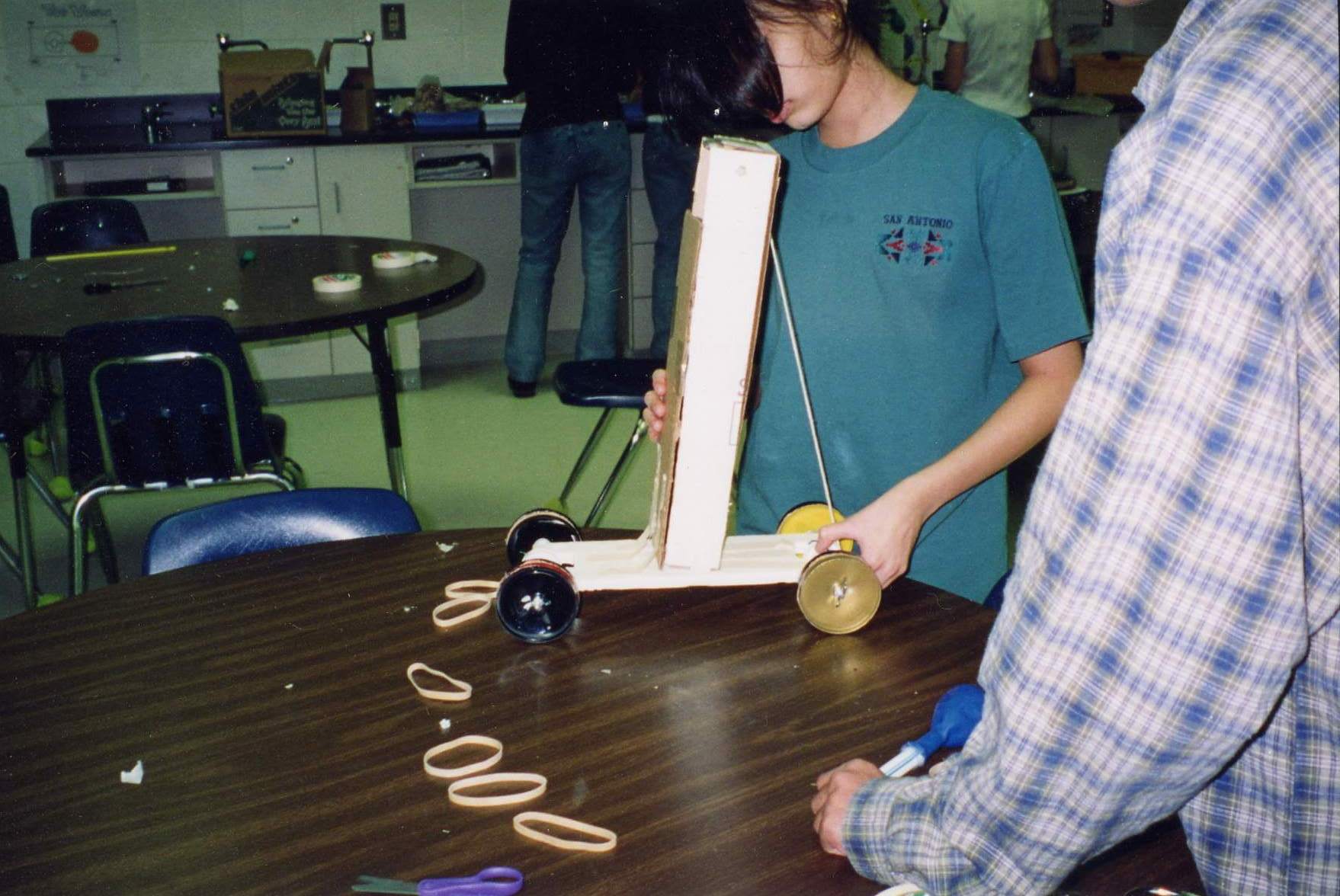 By now the students are proficient with the concepts they have been learning in the two earlier challenges, they understand the science behind the experimenting they have been doing, and they can explain what they've been seeing to others. They learn about the effects of different ways of applying forces in the Rubber-Band Car Mini-Challenge. We give them instructions for building a minimally-functioning rubber-band propelled vehicle, and as with the balloon-car challenge, they mess about with it, making changes to it to see what happens, generate questions about the effects of different features on its performance, design and run experiments to learn for sure how to optimize it, generate rules of thumb about its performance, present to each other, design their best and present it in a pin-up session, and then iteratively test and redesign their engine so that their vehicle goes as far as possible. This segment goes much faster than the Balloon-Car Mini-Challenge, as students are more conversant with the procedures.
By now the students are proficient with the concepts they have been learning in the two earlier challenges, they understand the science behind the experimenting they have been doing, and they can explain what they've been seeing to others. They learn about the effects of different ways of applying forces in the Rubber-Band Car Mini-Challenge. We give them instructions for building a minimally-functioning rubber-band propelled vehicle, and as with the balloon-car challenge, they mess about with it, making changes to it to see what happens, generate questions about the effects of different features on its performance, design and run experiments to learn for sure how to optimize it, generate rules of thumb about its performance, present to each other, design their best and present it in a pin-up session, and then iteratively test and redesign their engine so that their vehicle goes as far as possible. This segment goes much faster than the Balloon-Car Mini-Challenge, as students are more conversant with the procedures.
As in that challenge, between iterations, there is much discussion about the science underlying the phenomena the students are experiencing. Especially interesting during this mini-challenge is that students typically experience their earlyrules of thumb failing. For example, while it was good to get as much friction as possible out of the wheel-and-axle system while starting the car from a ramp, the rubber-band engine is so powerful that it requires traction (friction) to hold the wheels stable on the ground during initial acceleration. When a rule of thumb fails, students want to understand why and want to refine it to make it work better. This requires associating the science behind the rule with the rule. In this case, the failed rule of thumb provides a need to understand net force as well as impulse.
After completing their rubber-band cars, the class gets together and refines the whiteboard, and everyone is ready to design and build their best hybrid propulsion system.
|

